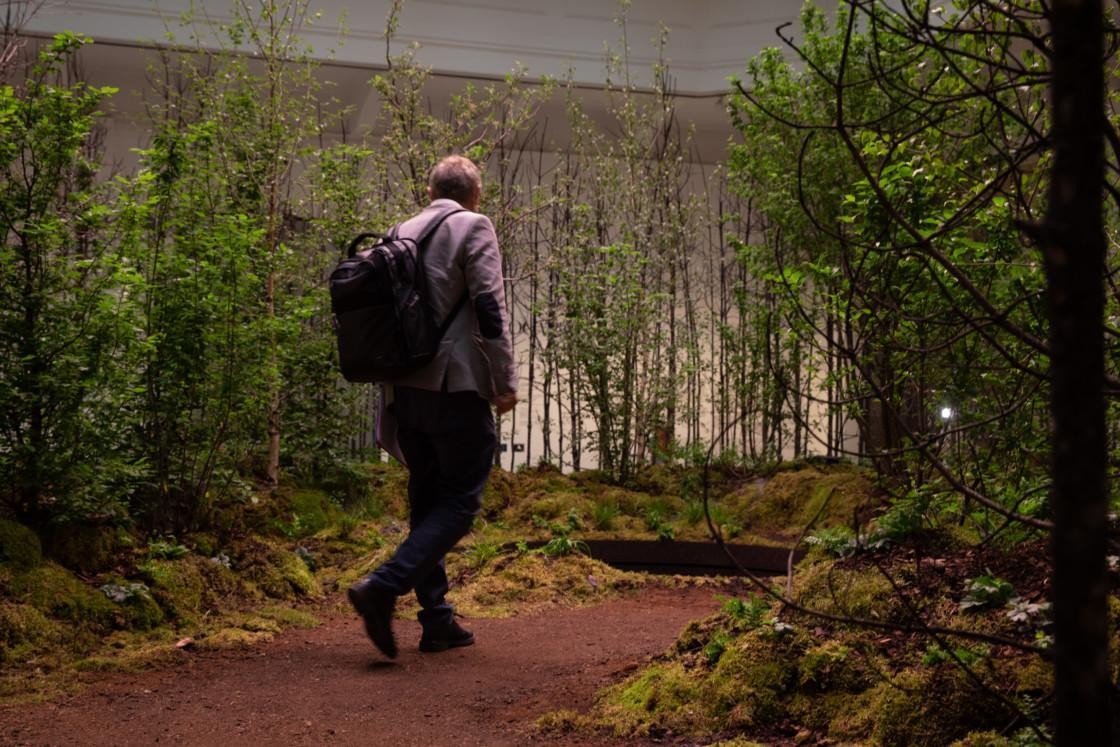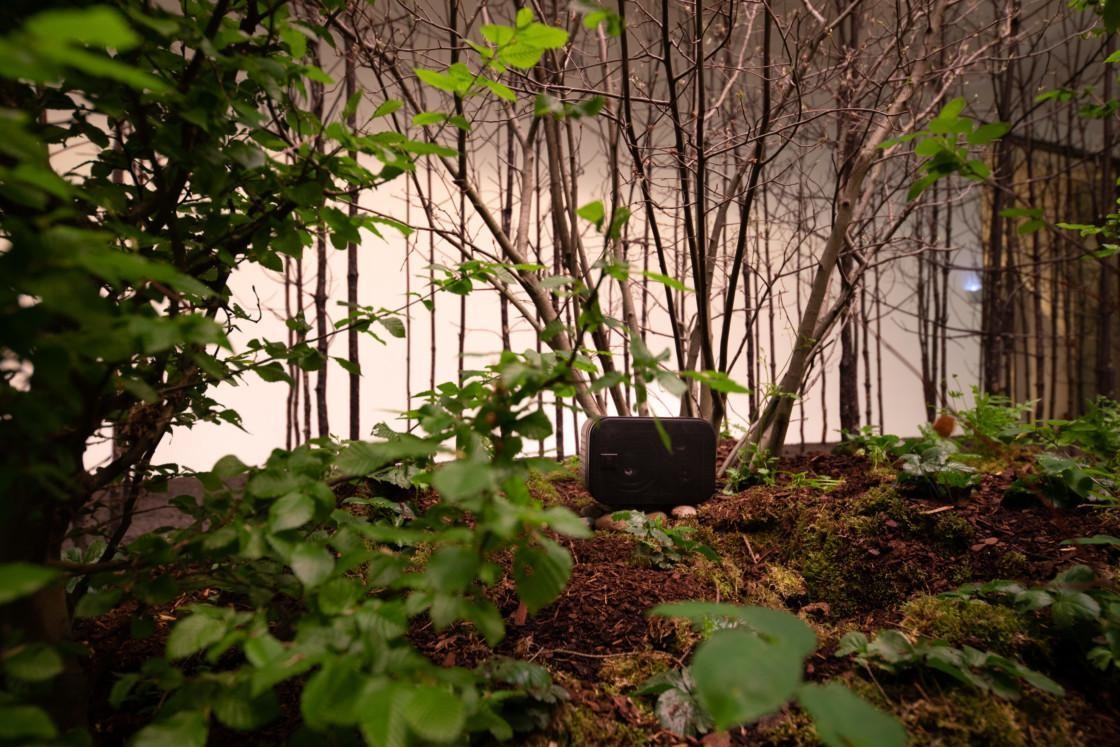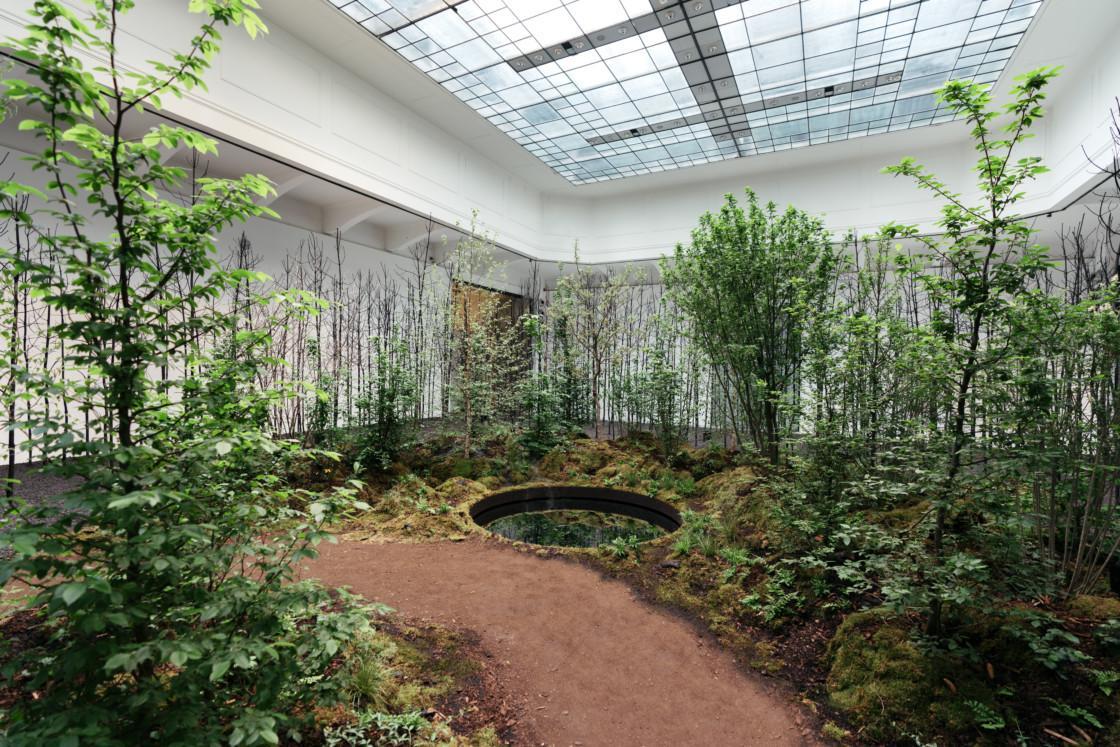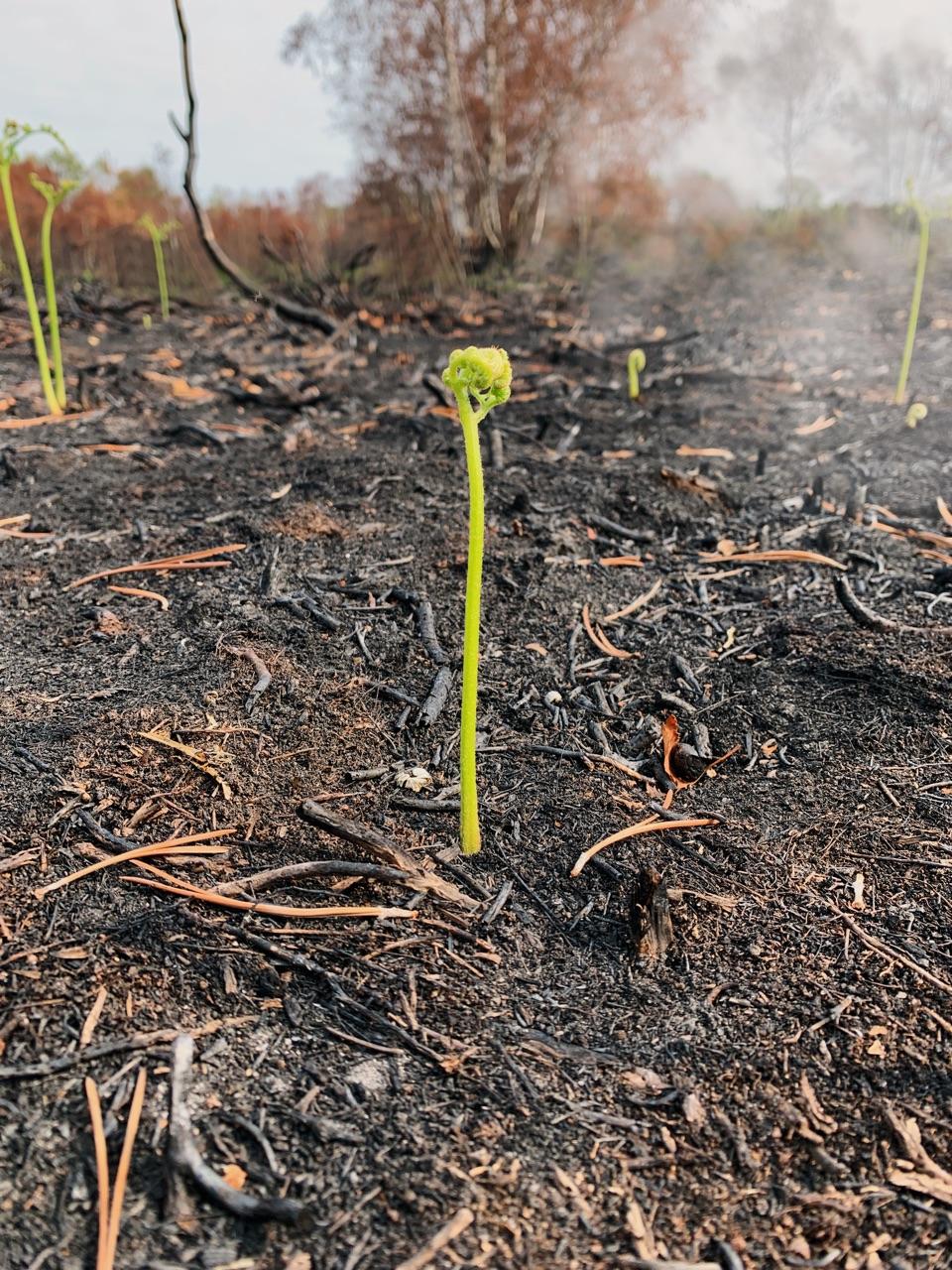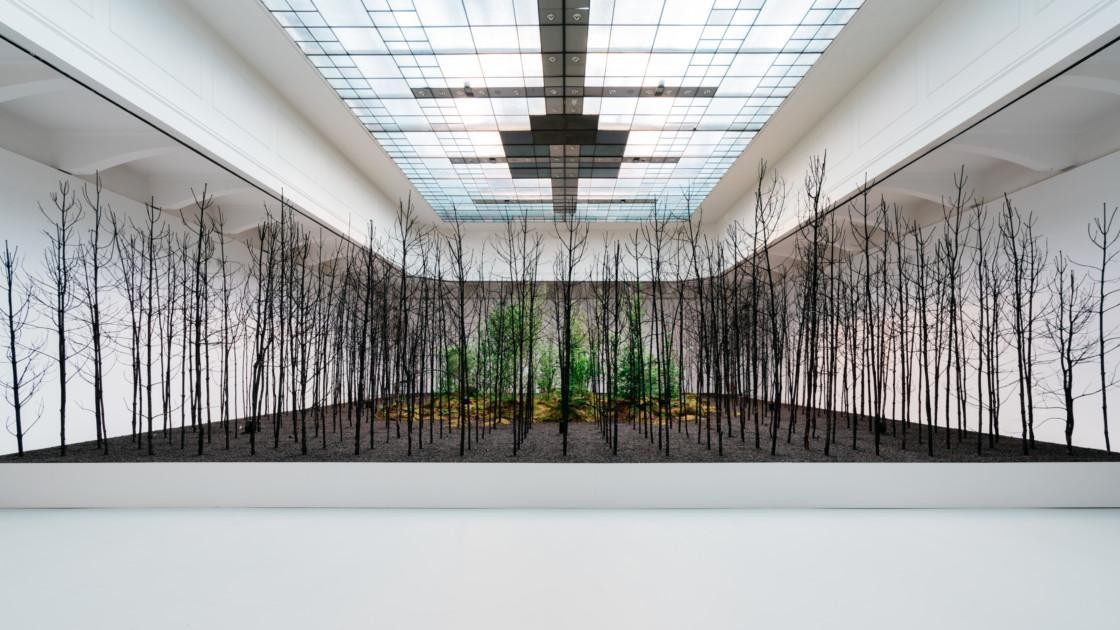Invocation for Hope is an immersive installation designed for the occasion of the Vienna Biennale for Change 2021 by the London-based design studio Superflux. On show at the Museum of Applied Arts, Vienna (MAK) from 28 May to 3 October 2021, the installation responds to the biennale’s theme ‘Planet Love: Climate Care in the Digital Age’ by generating new visions of a shared planet.
Invocation for Hope invites humanity to reassess its place in the natural world. To emerge from the ashes of fire-blackened trees into resurgent greenery – and a glistening pool with a surprise below the surface. The vast, immersive installation examines the complex interconnected relationships throughout the natural world, and raises the possibility of a more-than-human future – a post-anthropocentric planet in which humanity is just one part of a dynamic and multifaceted ecosystem. Audiences are invited to travel through a grid of burnt and blackened pines, salvaged from a recent wildfire, towards a resurgent living forest at its center, where multiple species living in harmony with humanity offer a promise of a new way of living.
In this cradle of biodiversity, you come to a freshwater pool, which reflects, not your own face, but another creature – a bison, an otter, a bird of prey – coming to the water to drink. The pool is surrounded by a cluster of nearly thirty different living trees, including oak, hornbeam, apple, silver birch, and mounds of biodiversity where mosses, grasses, lichens and shrubs grow symbiotically together over the course of the installation. These living ecologies are nourished by regular watering, grow lamps, and natural light from the large skylight on the museum ceiling.
Accompanied by a soundscape created by visionary musician Cosmo Sheldrake, the installation leads viewers one by one on a personal journey from the ravages of the climate crisis to the possibility of renewal and a deeper connection with nature. Wild maples, oaks, birches, and larches spring up and around mosses, ferns, and lichens. Sounds of bird and animal orchestras begin to fill the forest.
With the pool in its heart, this resurgent forest gives visitors the chance to reflect on their place in this more-than-human world – a part of the planet, not masters of it. Encouraging people to reflect on our fragile, interconnected relationship with the natural world, Invocation for Hope explores opportunities to create practices of more-than-human care for our climate-altered futures through ideas around resurgence, redistribution, reparation, and rewilding.
Superflux considers the climate crisis to be what philosopher Timothy Morton calls a ‘hyperobject’ – a phenomenon of such spatial and temporal scale that it is beyond the capacity of the human mind to fully grasp it. Invocation for Hope explores the complexity of climate change as a hyperobject, making it resonant and meaningful and finding pathways of hope amid disaster. The starting point for the installation is the idea that climate change is the inevitable result of a worldview that sees nature as an exploitable resource rather than a complex and interconnected system of life.
“Climate change is not a problem we can ‘solve’ but rather a predicament we must navigate with responsibility and urgency.”
Jon Ardern, co-founder Superflux
The creation of Invocation for Hope required the installation of more than 400 trees within the MAK. In collaboration with the forestry and fire departments of Austria’s Neunkirchen region, trees that had been burned in a recent wildfire were salvaged and transported to the museum. One of the main contributors to the spread of wildfires is an approach to forestry that prioritises monoculture as a means of maximising yield – single-species forests burn faster. As the result of a human attempt to exert control over nature, the fire-blackened forest serves as a synecdoche for anthropogenic climate change as a whole.
The trees are arranged in a symmetric grid so, as the viewer passes through them to the living oasis at the centre of the installation, they move from an imposed, rigid order to the organic exuberance of nature. The pool at the centre is surrounded by a cluster of nearly thirty different living trees, including oak, hornbeam, apple, silver birch, and mounds of biodiversity where mosses, grasses, lichens and shrubs will grow symbiotically together over the course of the installation. These living ecologies are nourished by regular watering, grow lamps and natural light from the large skylight on the museum ceiling.
Superflux’s practice does not merely consider ways of avoiding climate crisis but looks beyond ecological collapse, into the more-than-human future. Invocation of Hope can thus be seen as a companion piece to the studio’s other CreaTures ExP and contribution to La Biennale di Venezia 2021: Refuge for Resurgence. Superflux explores the relationship and impact of man and the environment through its ‘mytho-poetic’ framework: Instead of a direct representation of the dynamics of this relationship, the installation takes a more abstract and symbolic position.
“Our proposal for a way out of this dilemma is to completely change the way we view ourselves and our relationship with nature. Instead of seeing humans as separate from nature, we need to understand that we are a part of it. By radically changing our attitude toward natural systems and the ecology of our planet, we have the best chance to reverse the damage we’ve done. How might we – humans and non-humans – truly engage in collaborative living?”
Anab Jain, co-founder Superflux
After the exhibition is over, Superflux will re-plant the trees, creating a small re-wilded community space of contemplation in the city of Vienna. The hope is that this space continues, in the same way as the installation does, to be a place for people to reconsider and reflect on our relationship with nature.




